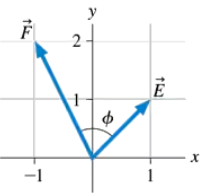(II) For the vectors shown in Fig. 3–41, determine
(b) 2 A (→ above A) ― 3 B (→ above B) + 2 C (→ above C) , and

 Verified step by step guidance
Verified step by step guidance Verified video answer for a similar problem:
Verified video answer for a similar problem:



 7:30m
7:30mMaster Vector Addition By Components with a bite sized video explanation from Patrick
Start learning